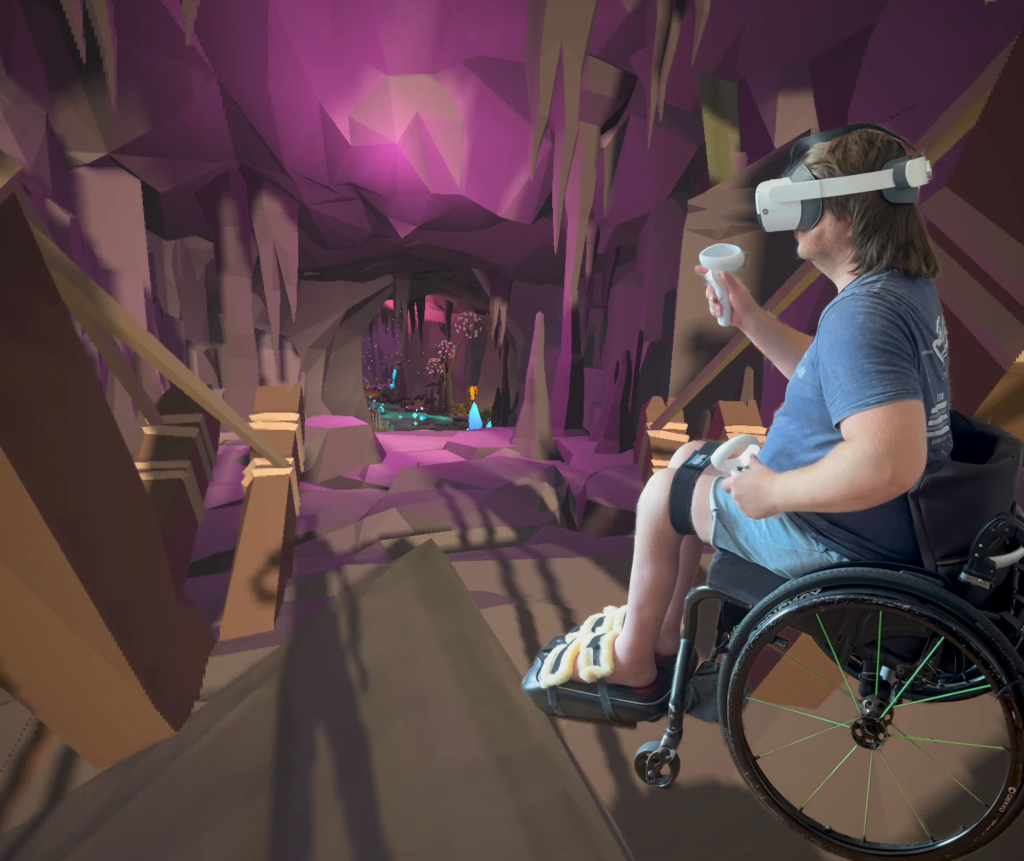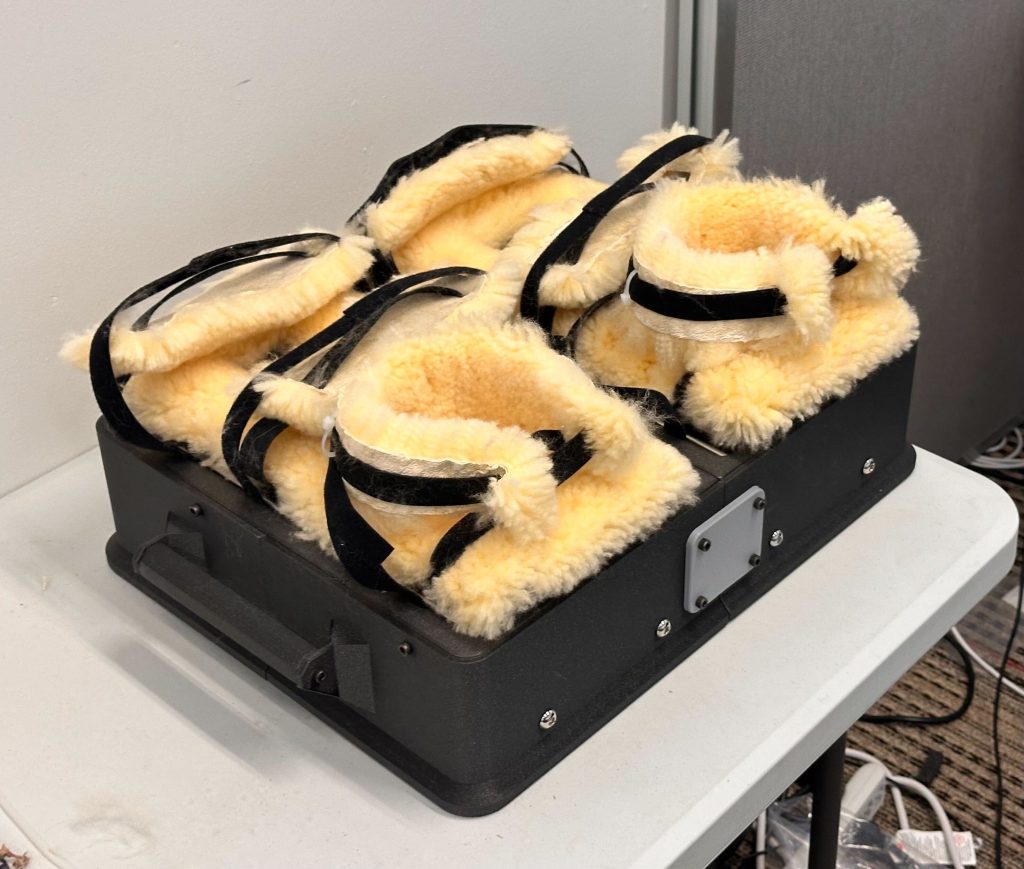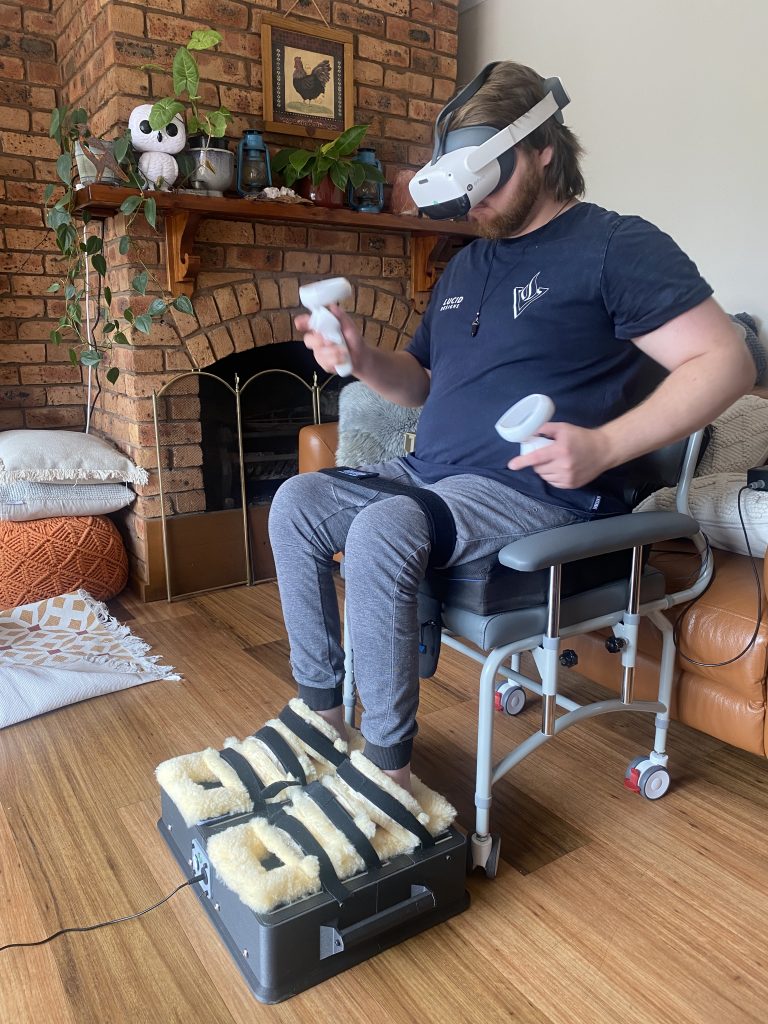Harnessing virtual reality to restore touch perception after spinal cord injury
Combining foot movements with virtual reality scenarios could help restore touch sensation in people with spinal cord injury and potentially improve mobility too.

Do some spinal sensory connections still work in people with spinal cord injury? When Research Scientist, Professor Sylvia Gustin, posed this important question, it led to breakthrough research in 2018. Participants with ‘complete’ spinal cord injury (who can’t feel or move their lower limbs) lay in an MRI machine while their big toe was touched with a brush. “Encouragingly, in half of those studied, the MRI showed that their brains were still responding to the stimulus from the toe via the spine, even though they couldn’t feel it,” Gustin explains. “This indicated they had surviving sensory nerve fibres in the spine that respond to touch.”
This signal is so weak the brain identifies this touch as ‘noise’. So, Gustin set out to develop a novel treatment which uses virtual reality, an avatar and foot stimulation to create a perceptual feedback loop from the point of touch to the brain. The research, called Project Avatar, has been supported by the Office for Health and Medical Research (OHMR). It has resulted in a world-first Virtual Reality Walking Intervention (VRWalk). This may help restore touch and mobility to some of the 20,000 Australians living with complete spinal cord injury (and some of the 15 million people living with spinal cord injury throughout the world).
Supporting spinal injury treatments
Project Avatar is led by Professor Sylvia Gustin, Director of the NeuroRecovery Research Hub at UNSW Sydney. She is also Co-Director of the Centre for Pain IMPACT at NeuRA (Neuroscience Research Australia). The project is a collaboration between teams from both organisations.
OHMR is supporting the work via a Spinal Cord Injury Research Grant which will run until 2027. The grant is designed to build capacity and capability for NSW spinal cord injury researchers to drive development of novel cure and care treatments. By supporting these therapies from inception to commercialisation, OHMR aims to improve the wellbeing and health outcomes of people with spinal cord injury in NSW and beyond. Other project collaborators include the University of Sydney, Texas A&M University and Immersive Experience Laboratories (IXL).

Tricking the brain into feeling movement
To use the VRWalk treatment, the person with the spinal cord injury places their bare feet on the bottom of a Neuro Mechanical Modulator device which looks like a large black briefcase. A strap holds their feet in place to ensure the soles are in constant contact with wheels located in the bottom of the case. The two wheels at the front and two wheels at the back rotate in synch with the movement of the person’s avatar and the direction it is moving. This happens while the consumer explores a virtual reality world via special wireless 3D glasses.
Using remote controls in each hand, the person directs the movements of their avatar who can enjoy 20 minutes of interactive ‘play’ on three different virtual islands. These feature a cave, countryside or waterscape (either a beach or lake). Variations in the landscape and landmarks include flat ground, paths, hills, a tunnel, a shallow lake, an abandoned house and a fire pit. The user can also elect to change the time of day to morning, midday or evening. Sound effects include birdsong and footsteps crunching on gravel or splashing through water. The sound of every footstep in the virtual world matches the avatar’s movements.
“This synchronised experience mimics the gait of movements like walking and running and helps ‘trick’ the brain into thinking that the experience of moving is real,” Gustin explains. “The aim is to help retrain and rewire the brain, to sustain old neural pathways and create new pathways for brain cells to ‘talk’ to one another. Thanks to our OHMR grant, we have been able to develop and improve the foot device, which has also been kept as small and portable as possible, which means we can send it to people via the post.”

Consumer improvements
Eleven different prototypes of the device have been developed with the help of consumers living with spinal cord injury. “Their feedback and suggestions have led us to add spring-loaded wheels to minimise pressure on the feet. We also added an open design so that people could see their feet in the case. Plus, we covered the foot pad and strap with medical grade sheepskin, to protect the feet.”
James Stanley, 33, who acquired a spinal injury while surfing, has been helping to road-test the device. “A week after his first VRWalk treatment James called me to say he could suddenly use muscles he had not used since his injury, which meant he could now bend over,” Gustin recalls.
“I now live with the hope that one day I may be able to feel the sand and the sea again, which would make a huge difference to my life,” says Stanley.
Trialing the VRWalk treatment
Project Avatar is now set to move into phase 2, which will involve a clinical trial. “This will study the impacts of a 20-day course of a 30-minute VRWalk intervention for people with ‘discomplete’ spinal cord injury,” Gustin says. Neuroimaging data from MRI scans will track any brain changes during and after the treatment.
Updated 8 months ago